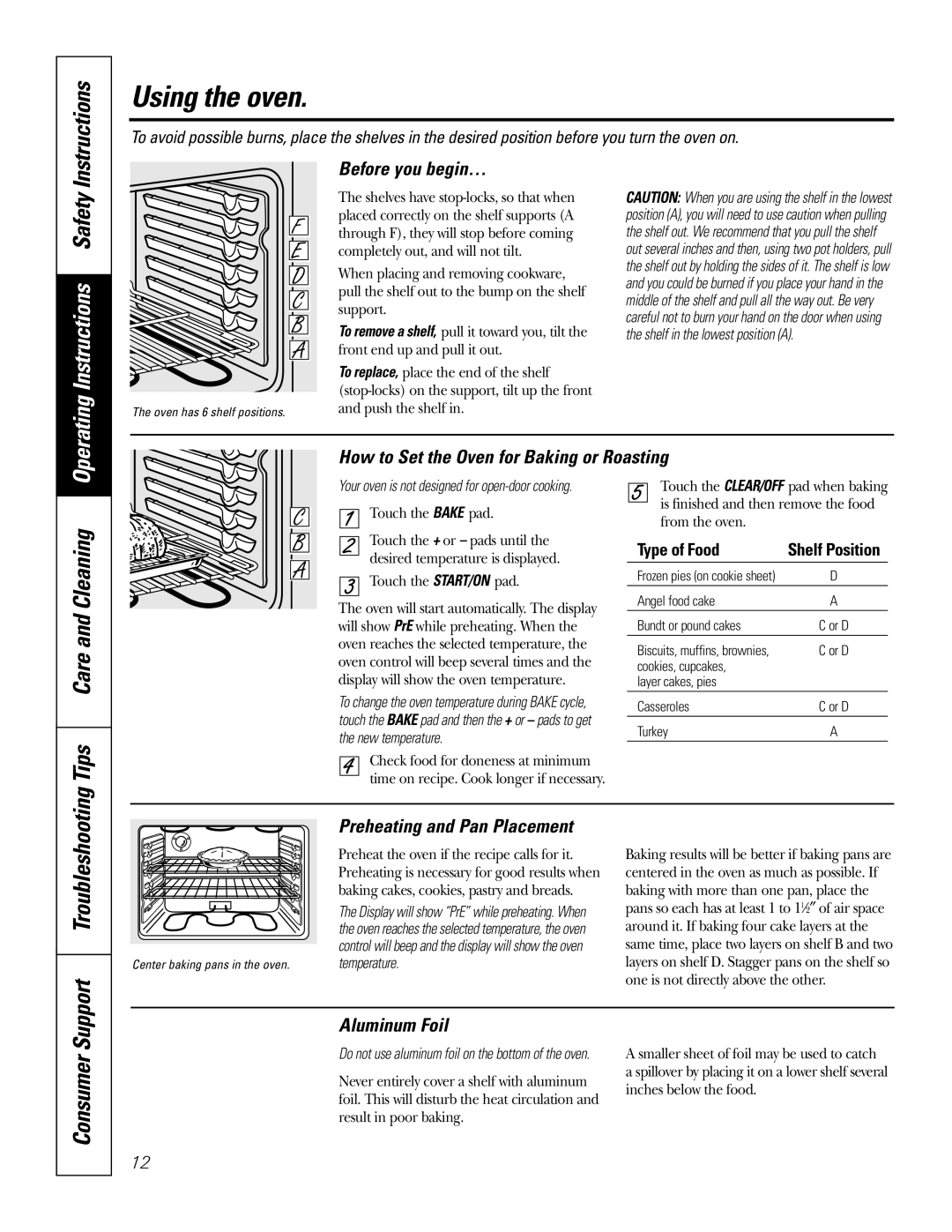JBP72, JBP71, JBP81, EER3001, JB710 specifications
General Electric (GE) has long been a trusted name in kitchen appliances, particularly in the realm of cooking technologies. Among their standout offerings are the GE JB710, EER3001, JBP81, JBP71, and JBP72 models. Each of these models showcases innovative features, reliability, and advanced cooking technologies designed to enhance the culinary experience.The GE JB710 is a standout model that features a sleek design combined with advanced technology. One of its remarkable features is the oven's true convection, which ensures even baking results by providing consistent heat distribution. Additionally, it boasts self-cleaning capabilities that save time and effort in maintenance. With a smooth surface cooktop that includes five burners, the JB710 offers versatility for multiple cooking tasks simultaneously. The model also incorporates the Precise Air convection system, promoting better cooking results for enthusiasts seeking precision.
The EER3001 is an electric range that takes cooking efficiency to the next level. Its notable features include a dual oven, allowing users to prepare multiple dishes at different temperatures simultaneously. This feature is particularly beneficial during holiday cooking or large family gatherings. The EER3001 also emphasizes energy efficiency with an environmentally friendly design, making it both a practical and eco-conscious choice for modern kitchens.
Shifting focus to the JBP81, this model is known for its durability and ease of use. With a traditional oven format and four surface burners, it combines classic design with reliable performance. The JBP81 includes an oven light for convenient monitoring during baking, along with a manual clean option for straightforward maintenance. It is especially popular among home cooks who appreciate simplicity without compromising quality.
The JBP71 and JBP72 models take versatility one step further, offering various configurations to cater to diverse kitchen layouts and cooking preferences. Both models are equipped with a range of features, such as sealed burners that provide precise heat control and an easy-to-clean surface. They also prioritize safety with features like a child lock system and a hot surface indicator, ensuring peace of mind for families.
In summary, GE's JB710, EER3001, JBP81, JBP71, and JBP72 ranges showcase a perfect blend of technology, convenience, and functionality. Each model serves to enhance the cooking experience, providing users with the tools they need to create culinary masterpieces. With their innovative features and commitment to quality, GE continues to be a leader in the kitchen appliance market, making these models highly sought after by cooks of all levels.

